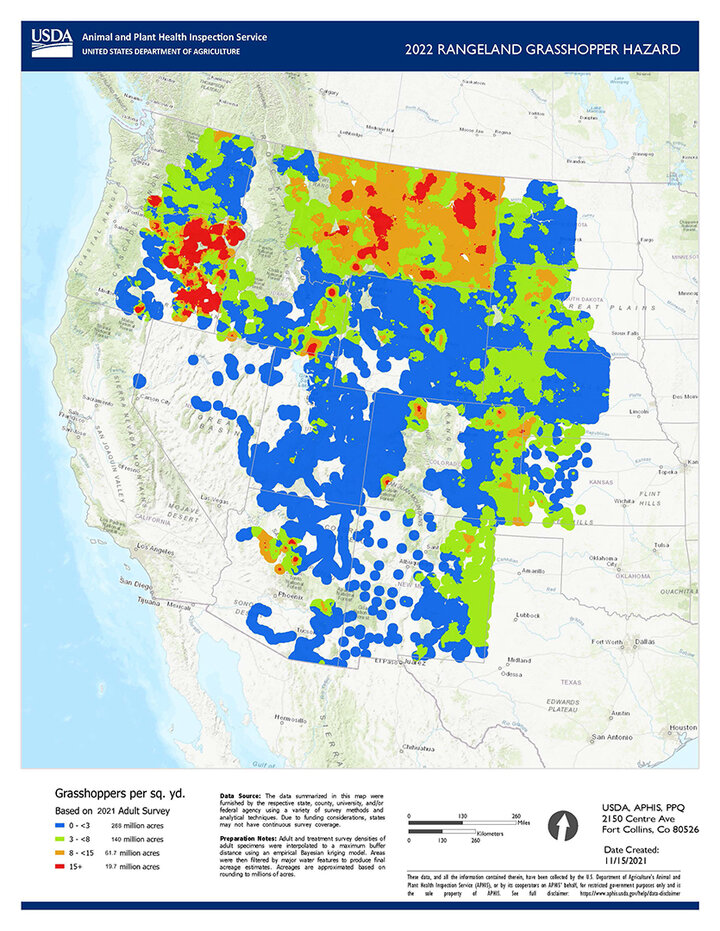The USDA-APHIS continues to provide us with regular updates on the status of rangeland grasshoppers across Nebraska (Figure 1). Based on fall adult surveys conducted by USDA-APHIS, the risk of grasshopper infestation in Nebraska rangelands will be low in 2022, with slightly higher risk in southwestern Nebraska. A majority of the western United States is projected to have very low numbers.
Grasshopper numbers are responsive to environmental conditions; however, species differ in their response to precipitation, plant communities, soil characteristics and microclimate. A wet spring and rains at time of grasshopper hatching and development (mid-May through June) improves rangeland forage quality and reduces the loss from grasshopper infestation.
Current long-range weather forecasts through March have indicated normal conditions, which might mean a continuation of cool, dry weather through the end of March. However, conditions beyond March appear to have a high degree of uncertainly at present.
Spotty occurrences of high grasshopper densities often occur throughout western Nebraska, even in low-risk years. Therefore, ranchers and range managers should maintain vigilance to monitor grasshopper densities during hatching periods. Keep an eye on CropWatch later this season for information on how to scout for rangeland grasshoppers.

